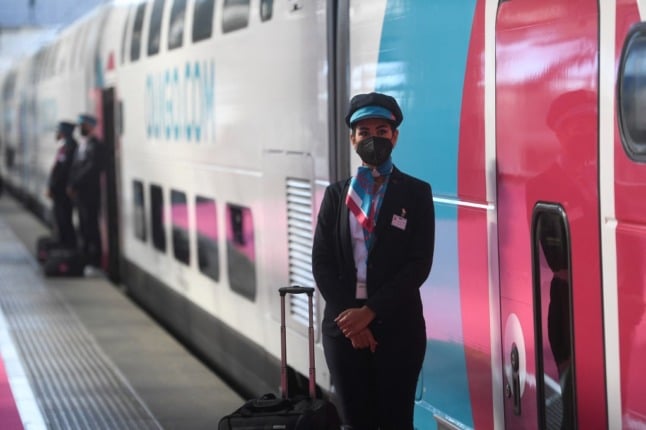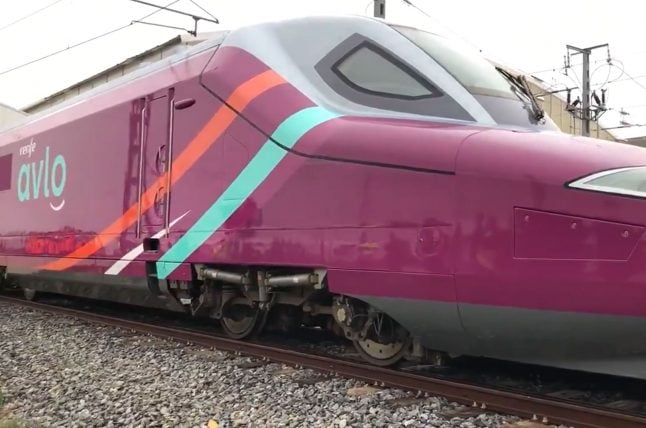Get to know Spain’s new low-cost trains
Until recently, Spanish state rail operator Renfe operated a monopoly in Spain.
However, the arrival of French-owned low-cost Ouigo in Spain has shaken up things dramatically since May 2021, spurring Renfe to launch its own low-cost branch Avlo.
What does this liberalisation of the country’s railways mean for ticket prices?
Well, Ouigo is selling tickets for its high-speed service between Madrid and Barcelona (620 km/385 miles apart) for just €9, stopping also in Zaragoza and Tarragona. More routes are planned for the end of 2021.
READ ALSO: What are the real ticket prices of Spain’s new low-cost Ouigo trains (and the extra costs)?
Avlo, which is so far only operating a Madrid-Barcelona service with other stops, is selling tickets for as little as €7.
Not all tickets are going for that price, as our article above explains, but they’re still usually cheaper than most of Renfe’s high-speed Ave services.

Buy tickets as early as possible
With so few services from the new low-cost companies, Renfe still dominates Spain’s rail network, so you still have to rely on them for most train journeys.
In this case, buying your train tickets months in advance will make a difference to the price.
For example, if you purchase it four months in advance, you could save up to 75 percent from the base fee under Renfe’s new ticket categories Básico, Elige and Premium.
However, some train users have complained about the fact that Renfe has cancelled the 25 percent discount passengers would get if they bought a return leg.
The new commercial structure affects the Ave (high-speed) and Larga Distancia (long distance) trains, i.e. Intercity, Euromed and Alvia.
Know what you’re paying for with Renfe’s new tickets
Understanding what Renfe’s new ticket categories each offer will help you to avoid paying unnecessary costs.
A Basic ticket is the cheapest option and offers the possibility of carrying up to 3 pieces of luggage as well as access to free Wi-Fi. You have to pay extra to add changes and cancellation cover as well as to choose seats however.
An Elige ticket (Pick and Mix as it’s been called in English) allows customers to choose between Standard or Comfort seating, as well as customise other elements of their ticket such as greater flexibility for changes and cancellations, changing ticket holder, the option of travelling with pets or seat next to yours vacant to have more space. The more perks you add, the more you pay.
And with the Premium ticket, the most expensive one, you have a comfort seat and food and drink brought to you. You can also make booking changes even when you have missed your train. You will also be entitled to change the ticket holder or to travel with your pet.
Make the most of Renfe’s new discounts
If you fall into one of the following categories, you can get further discounts on your Renfe train tickets, even if you have the cheapest basic ticket.
Children now get a 40 percent discount on all Renfe tickets, whereas before this was only available on the more expensive flexible tickets
Young people aged between 14 and 25 can get 30 percent discounts on AVE and Larga Distancia (long distance high-speed) and 25 percent discounts on Avant (Mid-Distance High-Speed) and Media Distancia (Mid-Distance) and Cercanías/Rodalies (Suburban/Commuter) trains.
It does involve buying a Tarjeta +Renfe Joven card for €50. Check if there are more discounts you can get by applying for a youth card in your region.
There’s also a 25 percent price drop for over 60s and people with disabilities with the Tarjeta Dorada (this Gold Card costs €6 to buy) valid for every day of the week.
Groups of 4 to 9 people get an 8 percent discount as well.

Travel midweek
As Renfe has adapted its pricing model to the same demand-based system used by commercial airlines, it’s now more important than ever to travel by train at less busy times, avoiding rush hour and weekends.
This is when the biggest price drops of up to 75 percent will apply.
The new pricing system applies to both AVE and Avlo trains.
READ ALSO:



 Please whitelist us to continue reading.
Please whitelist us to continue reading.
Member comments